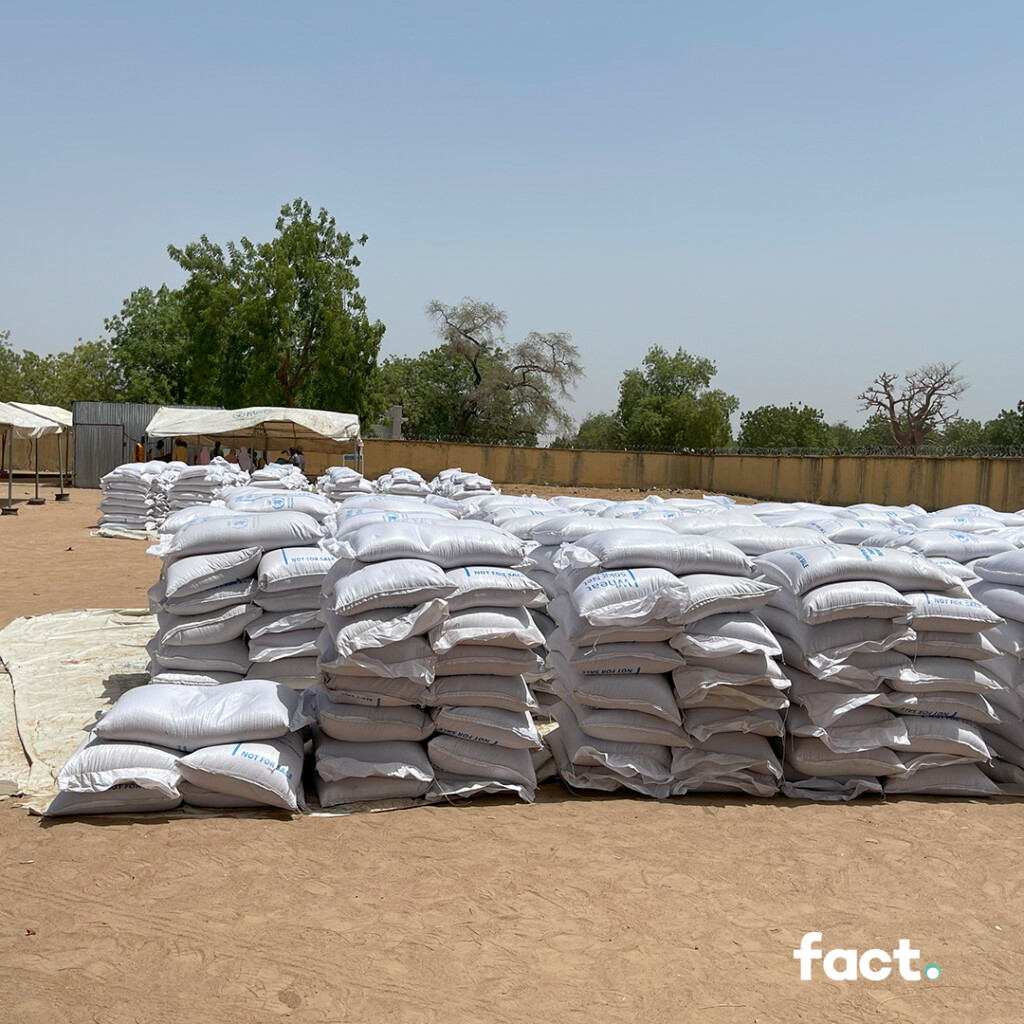
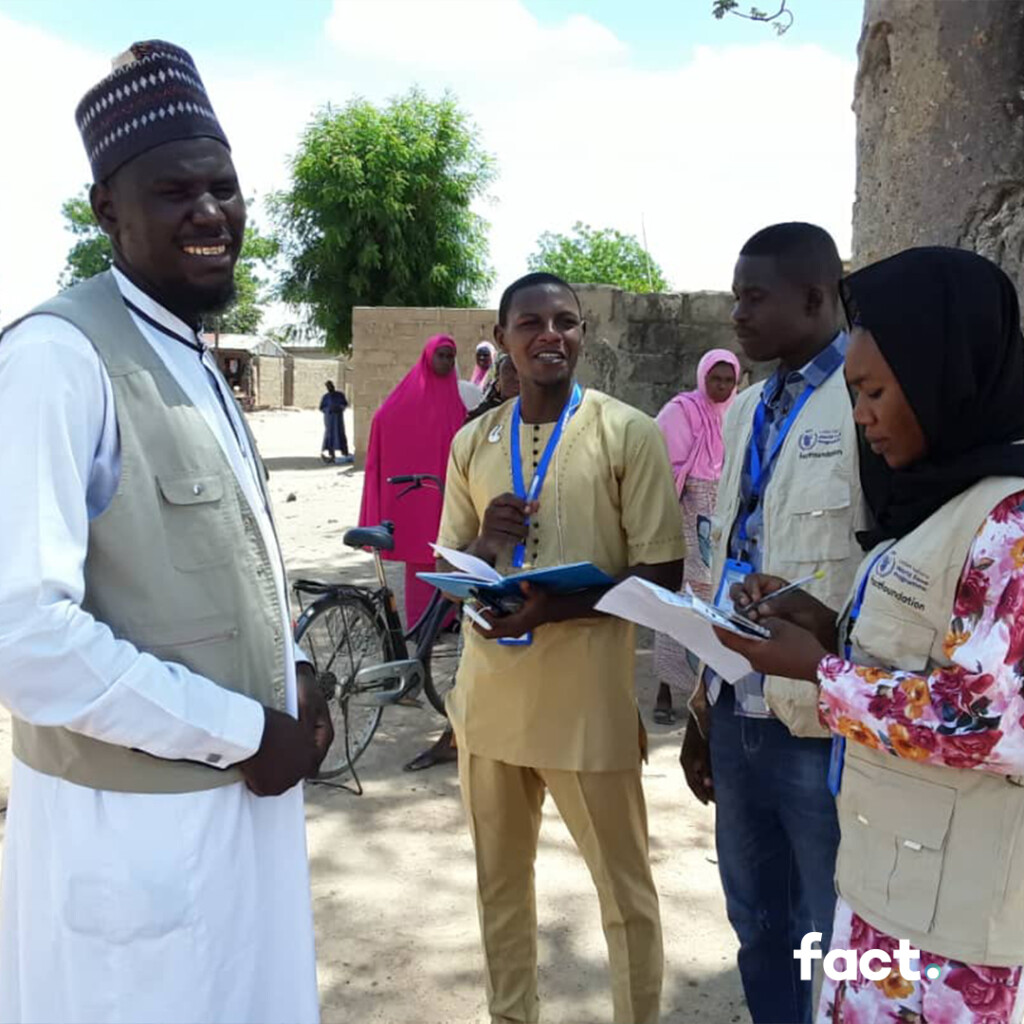
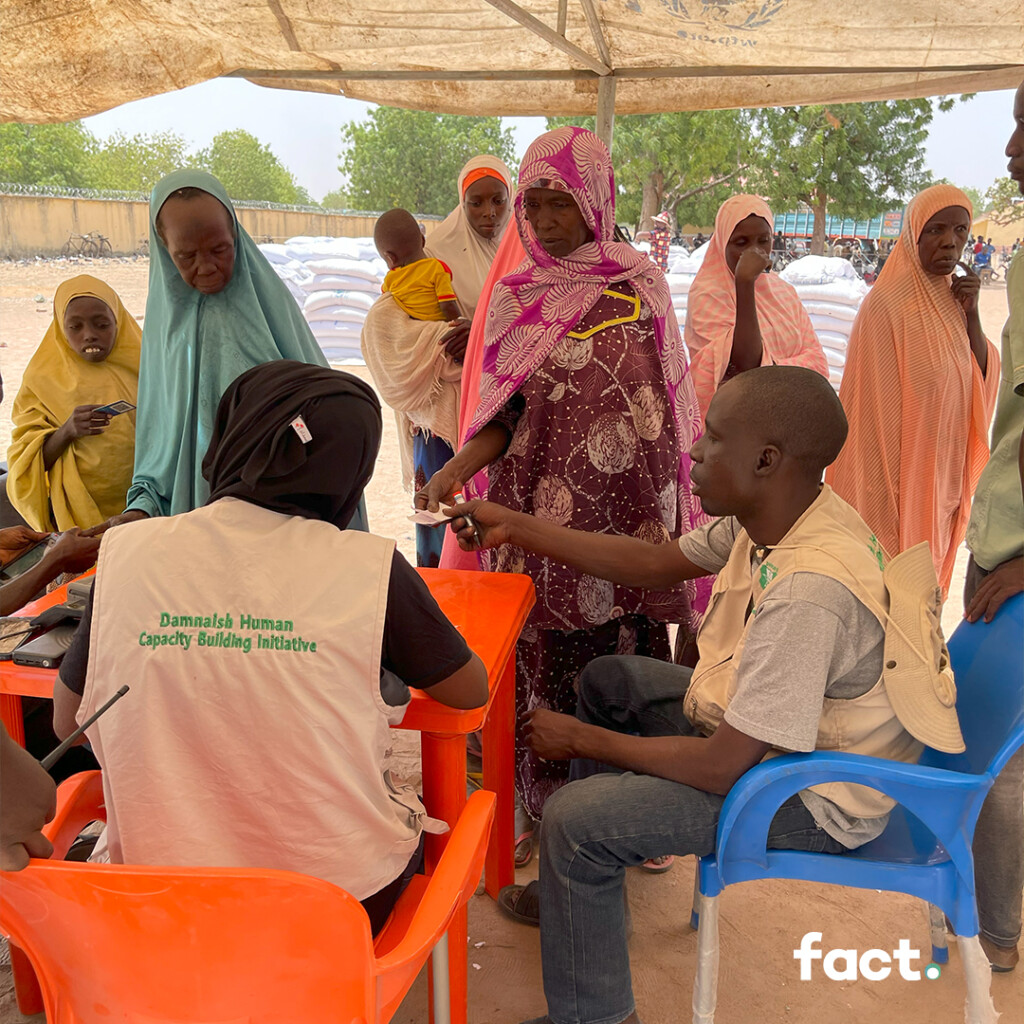
Background
The World Food Programme (WFP) is addressing the food needs of the affected population through its Country Strategic Plan (CSP) spanning from 2023 to 2027. This comprehensive plan aims to deliver food assistance, cash transfers, capacity building, and livelihood opportunities to the affected communities. Currently, WFP operates in various areas of Borno State, including Bayo, Biu, Damboa, Hawul, Kwaya Kusar, and Shani Local Government Areas (LGAs), all of which coincide with FACT’s operational zones. To enhance accountability, effectiveness, and efficiency within the CSP framework and to mitigate risks, FACT has partnered with WFP to implement third-party monitoring (TPM) in these aforementioned locations. In pursuit of the project’s objectives, the team from Fact Foundation regularly visited sites of the Targeted Supplementary Feeding Program, retailer outlets, and locations where WFP’s activities funded by BMZ (Federal Ministry for Economic Cooperation and Development, Germany) were being carried out. These visits were conducted monthly in accordance with the work order assigned to FACT by WFP. Throughout the project duration, FACT was tasked with overseeing a total of 857 distribution sites. While the project team managed to cover 665 of these sites, representing a completion rate of 77%, certain limitations were encountered. The inability to reach some sites was primarily attributed to challenges related to poor road conditions and security concerns in the area.
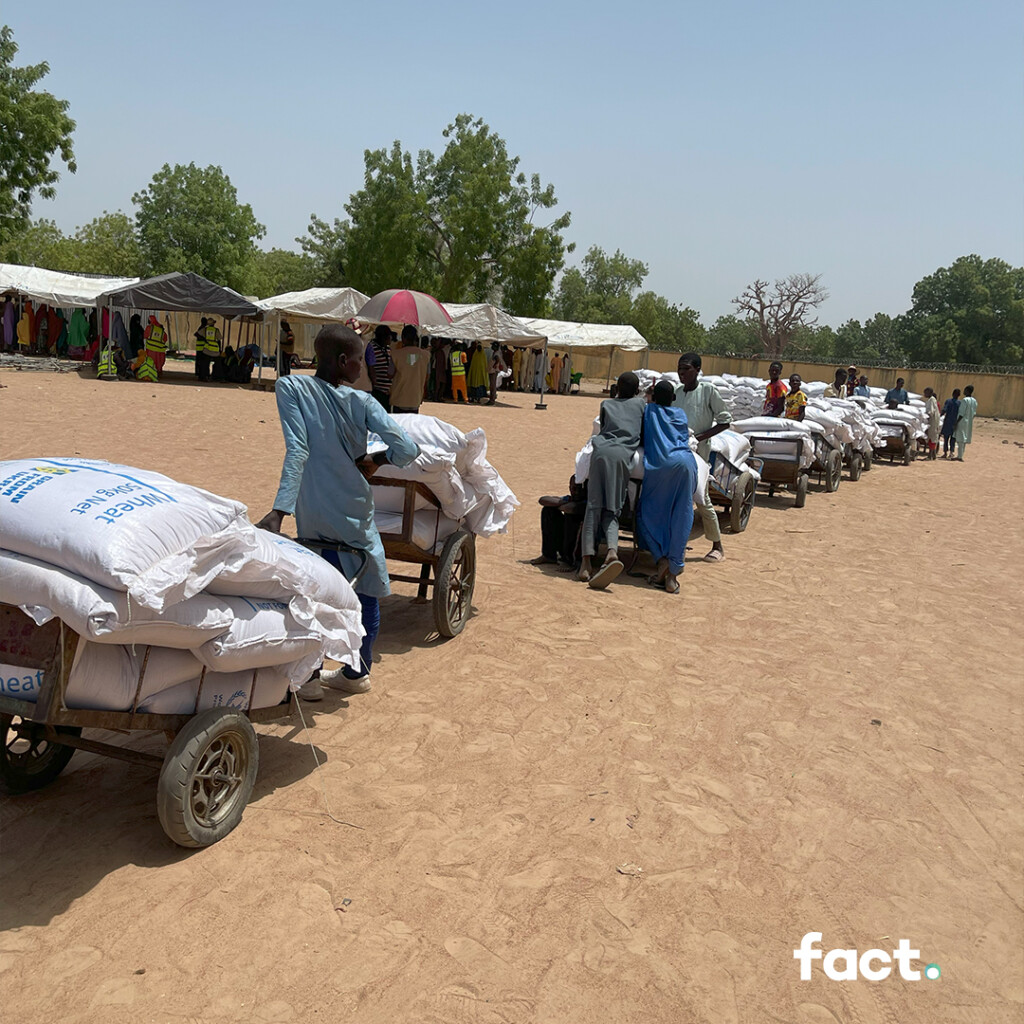
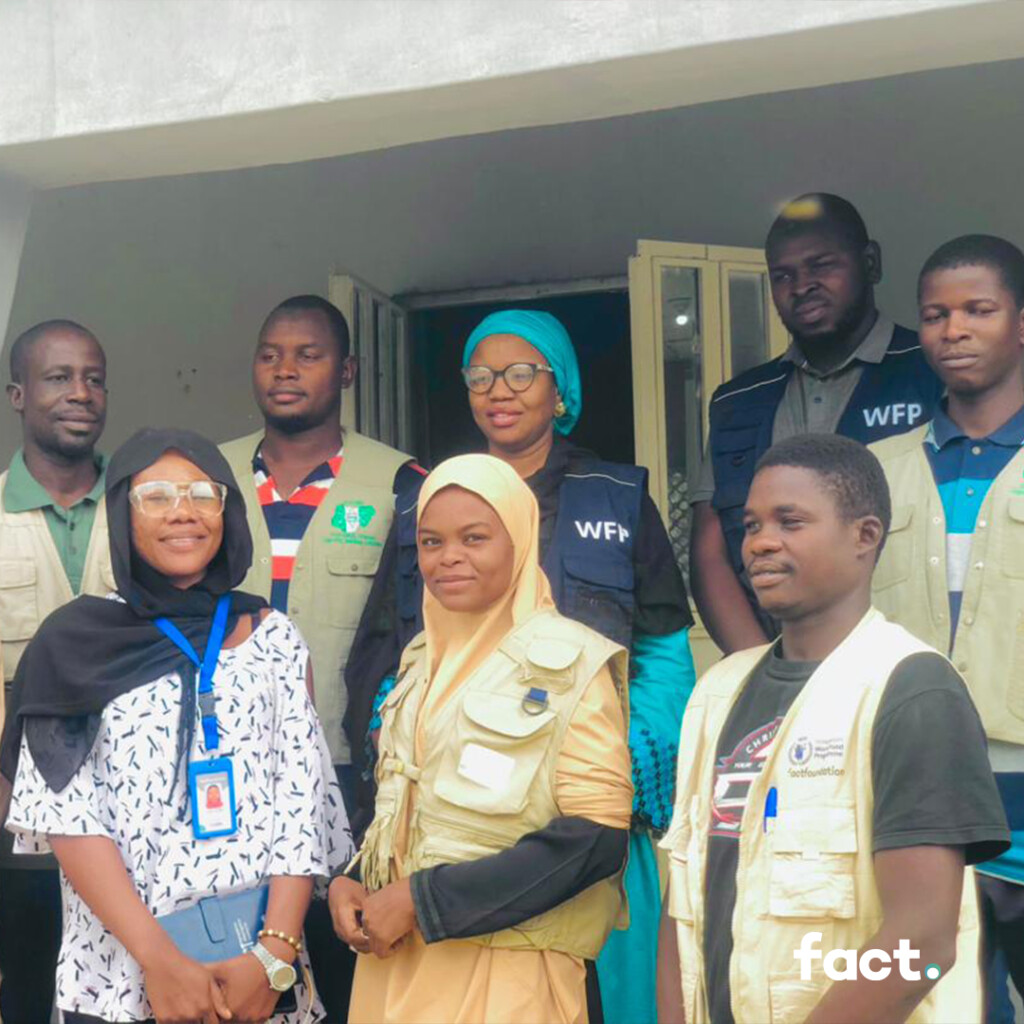
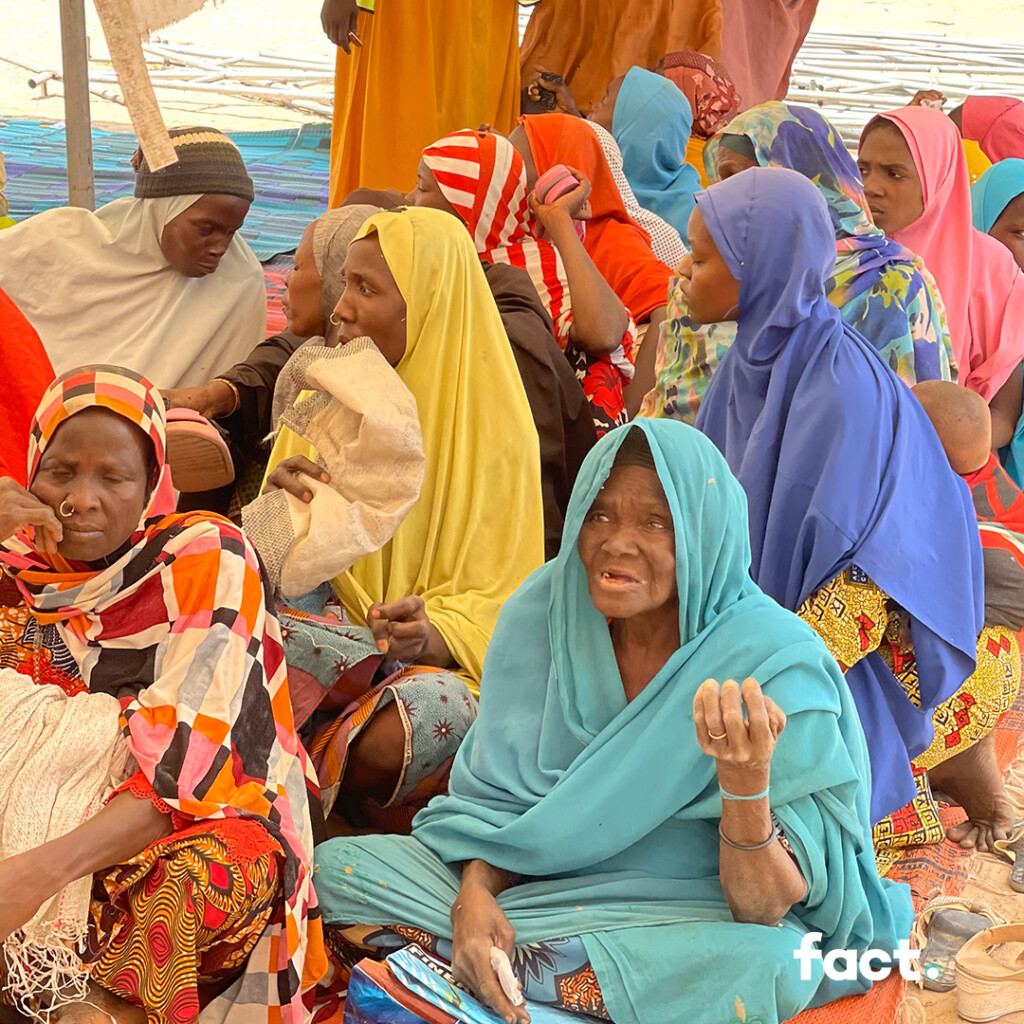
Statement of problem
Northeast Nigeria is currently facing a remarkable humanitarian crisis as a result of the conflict involving security forces and armed opposition groups (AOGs). The situation since 2009 has deteriorated significantly, with most Local Government areas in Borno state and the adjoining States of Adamawa and Yobe experiencing enormous destruction of infrastructure, large-scale population displacement and disruption in livelihoods. Threats of attacks by non-state armed groups and restrictions in movements continue to have negative impacts on trade, livelihoods, and markets, leaving a substantial proportion of the population relying on humanitarian assistance.
In 2022, 4.1 million people were projected to face alarming levels of food insecurity and malnutrition in the Borno, Adamawa and Yobe (BAY) states, unhindered humanitarian access and a safe operating environment are critical to enable aid agencies to sustain the ongoing scale-up and prepositioning of vital supplies. The unrest and insecurity affected the food security, nutrition and livelihood situation of areas in the Lake Chad Basin, significantly impacting areas in Cameroon, Chad, Niger, and Nigeria. Livelihood and markets have been disrupted, and mass population displacements are seen with the situation showing little signs of substantially abating.
Nigeria is the world’s seventh most populated nation and home to Africa’s largest population, currently more than 216 million people with an average growth of 2.5 % per year putting it on track to reach 401 million by 2050. More than 43% of the population is under 14 years of age and it is ranked 163rd of 189 countries in the 2020 Human Development Index and 186th for life expectancy at 52.7 years at birth. Nigeria has a large informal economy, accounting for more than half of its GDP and over 80 per cent of employment. Agriculture represents about one-quarter of total GDP, indicating broad exposure to the impact of climate change. High incidence of floods, desertification and deforestation continues to pose serious threats to livelihoods.
Unfortunately, undernourishment and food insecurity are steadily on the rise, and this is partly owing to low agricultural production, inadequate policy choices and persistent conflict and population displacement, exacerbated by insufficient social protection coverage, which supports only 13 % of Nigerians. More than half of all Nigerians, or more than 100 million people, are enduring at least moderate food insecurity.
In response to rising food insecurity, volatile food prices, security uncertainties and climate change impacts, WFP is leveraging targeted gender-sensitive crisis response to help forge durable paths to recovery by moving relief beneficiaries to livelihood activities, supporting food systems that are climate-resilient and integrating nutrition, gender and protection concerns into all interventions. The approach will also mainstream Accountability to the Affected Population (AAP), disability inclusion and environmental sustainability. On these premises, WFP intends to refine targeting to better ensure the inclusion of vulnerable groups; improve gender sensitivity in programming; extend the timeframes of activities; and explore opportunities to scale up livelihood activities by providing food assistance and an integrated package of gender-transformative malnutrition prevention alongside social and behavior change communication, asset-creation, skills development and complementary livelihood activities to crisis-affected, food-insecure internally displaced persons, returnees, refugees, host communities and nutritionally vulnerable groups (including children 6–23 months of age and pregnant and nursing mothers).
Third-Party Monitoring (TPM) Focus
The TPM service provision achieved its goals through a two-pronged approach. In areas of stability where the existing WFP capacity was limited, monitoring gaps were filled on an as-needed basis, depending on the capacity of the WFP office at that particular time. Currently, WFP Nigeria is extending its Country Strategic Plan (CSP) from February 2023 to 2027, which aims to strengthen WFP’s presence in Nigeria by building partnerships and maximizing results through complementary action. The CSP aims to support the people WFP serves with in-kind food, cash transfers, and capacity building through the provision of:
- General food distributions and income generation activities capacity building;
- Malnutrition prevention for children under 5 years of age and pregnant or breastfeeding women and malnutrition treatment activities for children under 5 years of age;
- Seasonal livelihood assistance; and
- Integrated malnutrition prevention for pregnant or breastfeeding women. All activities were supplemented with social behavior change communication messaging.
Role of FACT
Fact Foundation (FACT), in collaboration with the World Food Programme (WFP), extended enhanced monitoring coverage across all operational areas in Borno State, particularly in the Bayo, Biu, Dambo, Hawul, Kwaya Kusar, and Shani Local Government Areas (LGAs) through a monthly assigned Work Order (WO). The primary purpose is to ensure adherence to WFP’s recommended guidelines in providing services to beneficiaries while safeguarding them from further harm or indignity. Additionally, it seeks to ensure neutrality, impartiality, and confidentiality during the implementation of activities, as well as in data collection through any means, and to gather high-quality and reliable data for WFP decision-making and reporting.
FACT has a strong profile of research staff with years of experience in conducting TPM for UN Agencies and Donors. Through the field presence of FACT teams in the Northeast, the approach focused on assessing the quality and means of improving the various activities WFP implemented. With strict adherence to WFP’s monitoring TORs, FACT’s TPM activities not only helped WFP as well as partners to understand the risks and find ways to mitigate them but also focused on the views of beneficiaries and their opinions on how programs could be improved, to be more efficient and effective. The two types of monitoring conducted by WFP include process monitoring and outcome monitoring. Therefore, the overall aim of FACT was to spot-check whether, and to what extent, the project is meeting its desired outcomes, and is in line with international good practice and sector standards, with a particular focus on programme quality, accountability to affected populations (AAP), protection and fraud risk mitigation.
Through a monthly Work Order (WO), FACT is assigned various activities classified as ACTIVITY 1, 2, and 4, for monitoring and reporting. These activities include;
Activity 1 | 6-23 Months of E-Voucher distribution monitoring Pregnant and Breastfeeding Women, and Girls (PBWG) E-voucher distribution monitoring. Cash-Based Transfers E-Voucher Deep Field Level (DFL).In-kind Unconditional Resource Transfers (URT) for New Arrivals. |
| Activity 2 | Targeted Supplementary Feeding Program (TSFP) for 6-59 Months |
| Activity 3 | Livelihood (BMZ Act implementation) |
Activity 4 | Livelihood – Cash-Based Transfer (CBT). Cash PPTNutrition – Cash-Based Transfer (CBT) E-VoucherLivelihood -Crop Production, Livestock production, Income-generating activity and Natural resource management |
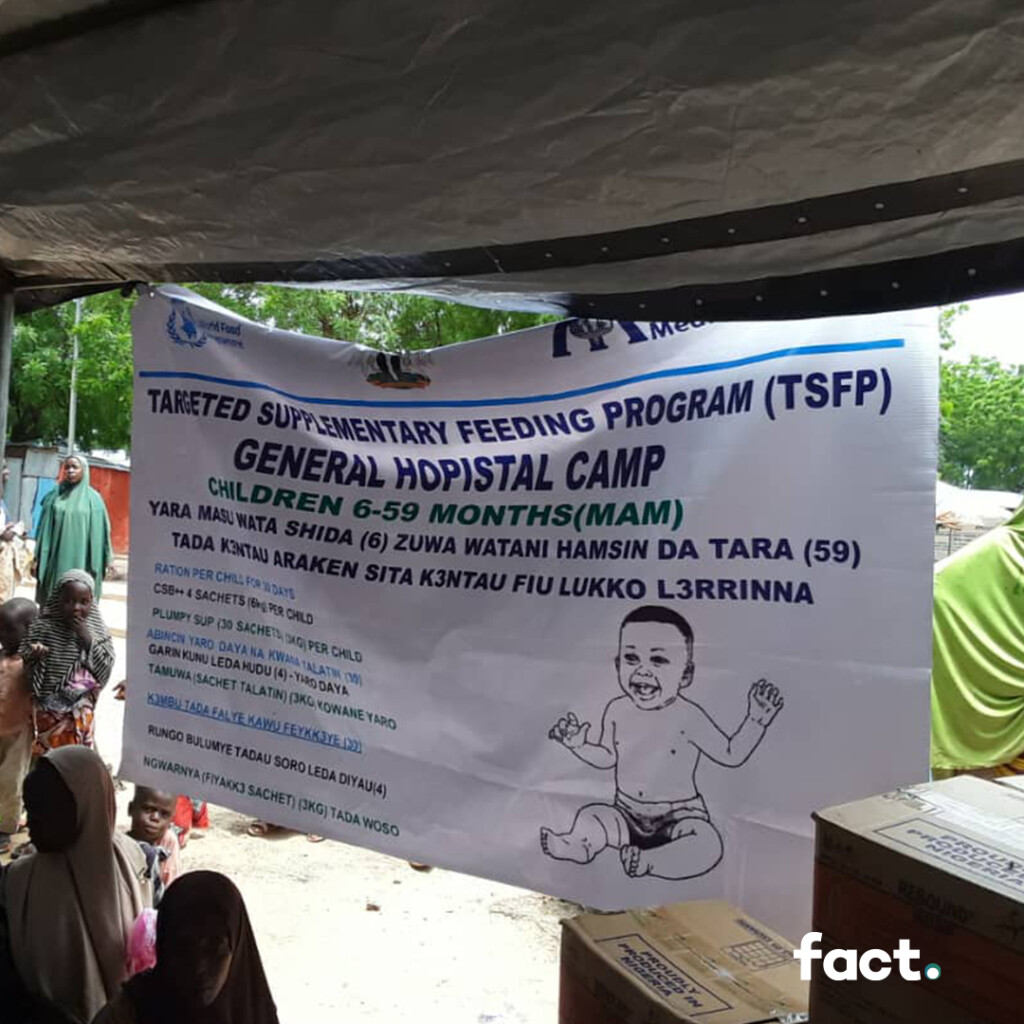

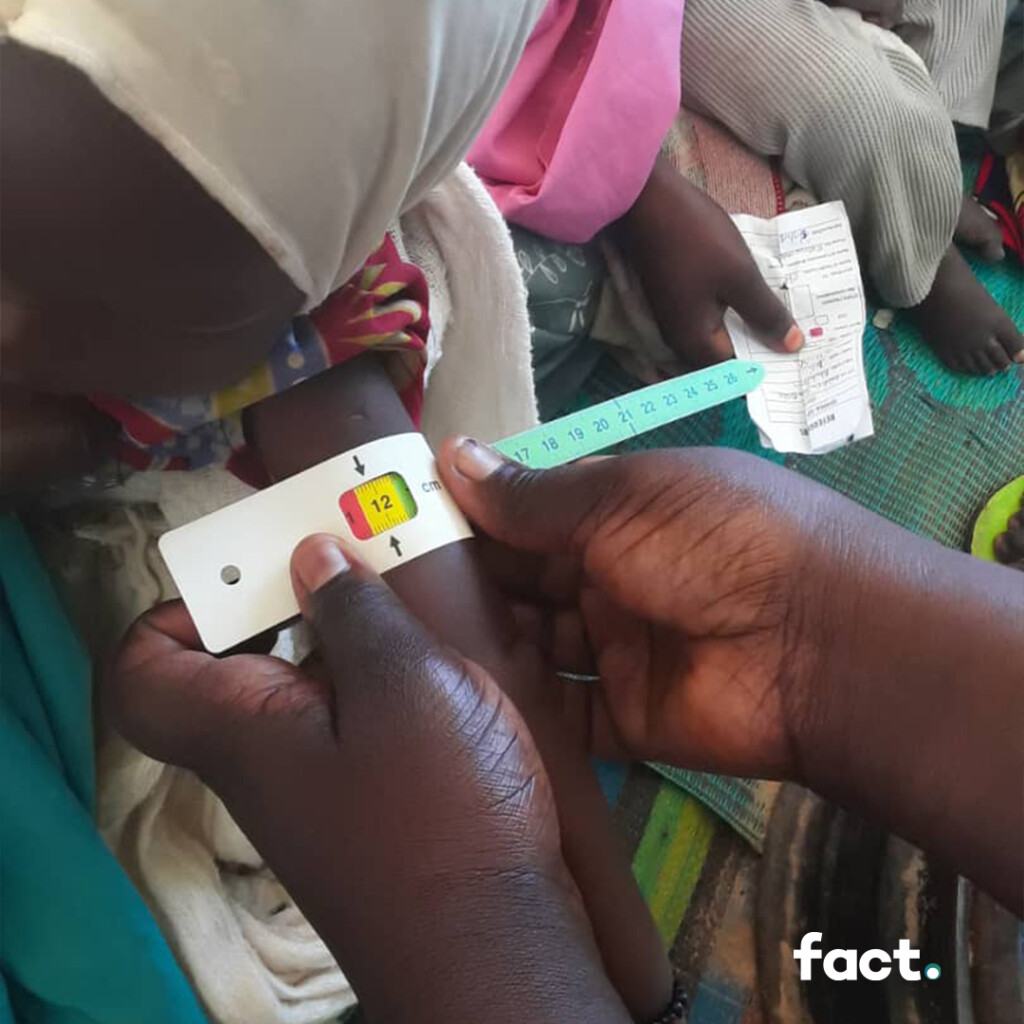
Impact metrics (Infographics)
In 10 months of TPM’s field activities, FACT’s project team was able to complete its monitoring assignment in 639 (77%) out of 830 sites/locations assigned through the monthly Work Order across the six (6) LGAs. During these visits, the TPM monitors successfully carried out 315 debriefs, 3490 beneficiary interviews, and attended 52 Coordination meetings with state and local government stakeholders.
During the visits to the various distribution sites, the TPM project team held 557 post-distribution debriefs. These debrief sessions were conducted to share observation findings, beneficiary views, and monitoring issues noted during the activities. The debrief sessions were held with the LGA, UNICEF, cooperating partners, and the TPM team in attendance.
At each distribution site, the team must conduct beneficiary interviews. This exercise allows WFP to have a clear understanding of how its aid and services impact the people they serve. The
Conclusion
By the conclusion of the project, the team from Fact Foundation successfully covered 639 out of the 830 sites/locations designated by WFP in Bayo, Biu, Damboa, Hawul, Kwaya Kusar, and Shani, as outlined in the monthly Work Order. Throughout the project duration, the team diligently monitored various activities including Retailers Performance Monitoring and Evaluation, Market Price Data Collection, Targeted Supplementary Feeding Program for Pregnant Breastfeeding Women and Girls (E-voucher), Unconditional Resource Transfer (URT) In-kind for New Arrivals, and 6-23 Months (E-voucher), alongside Warehouse Monitoring. The achieved coverage represents a commendable 77% completion rate within the project timeline. These milestones reflect the concerted efforts of the project team and the effective coordination facilitated by the senior management. The success is attributable to the robust communication channels upheld throughout the project implementation phase.


1 Comment
Mamadu joel Gadai
Wow kudos